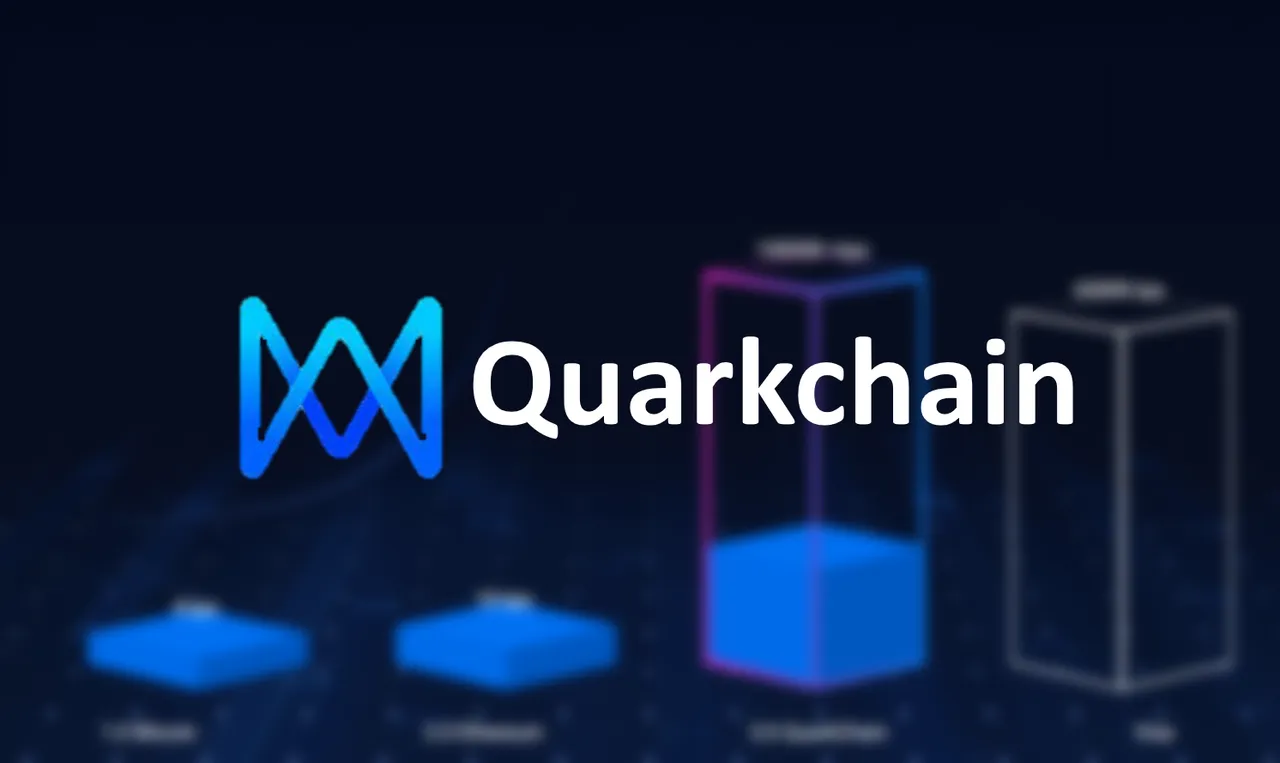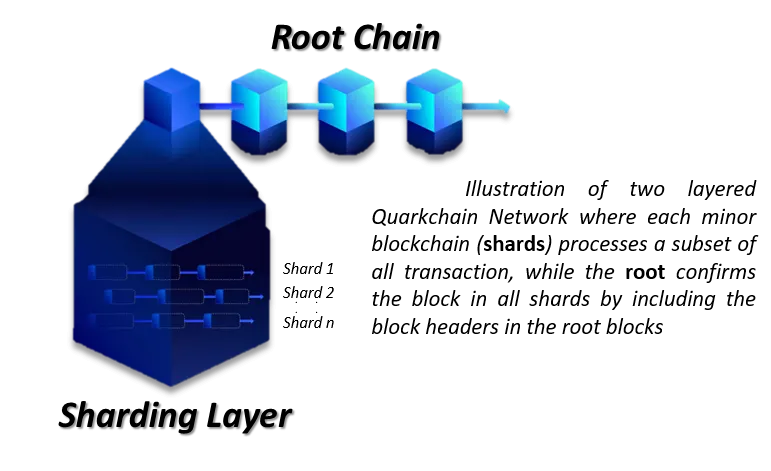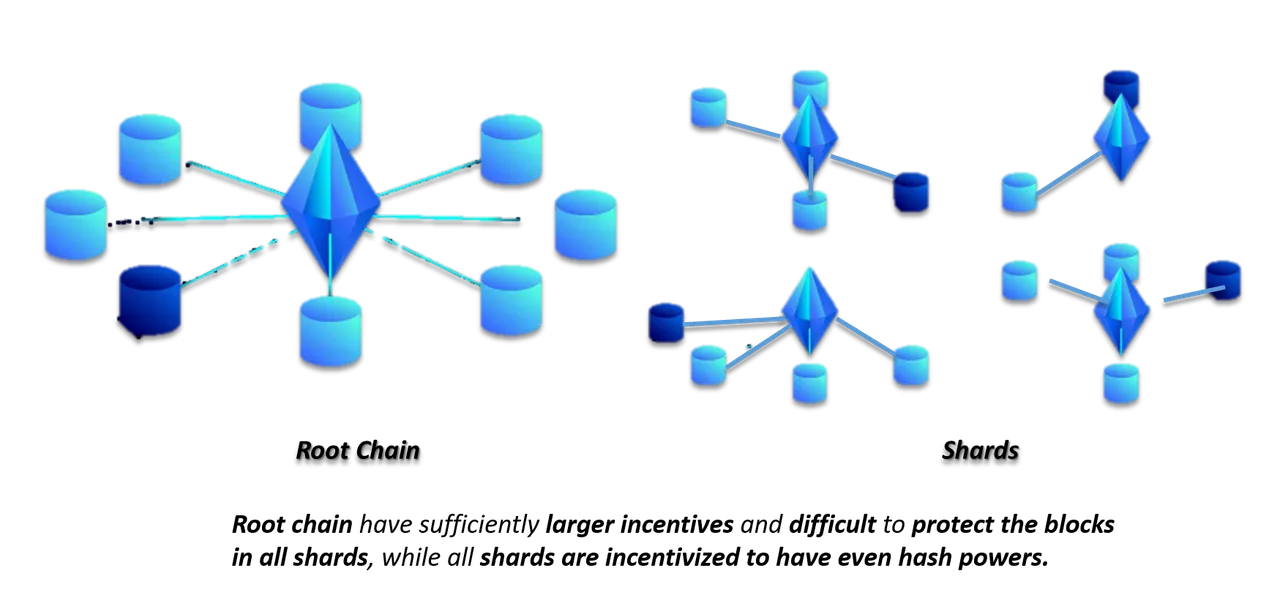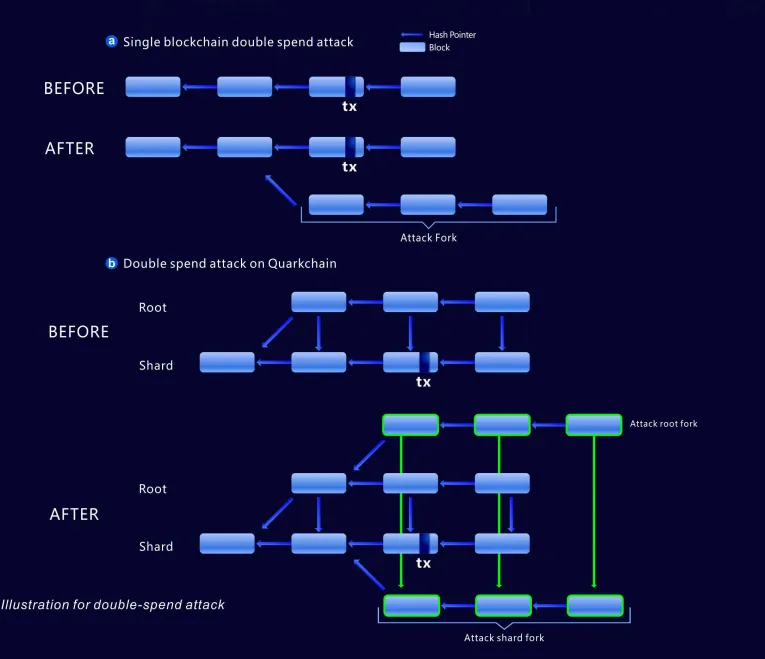Hi, Pankaj here 👋











If you are aware, then you may know that blockchains basically have two major functionalities.
- Ledger - to keep record of all transactional data.
- Confirmation - to confirm the result of the transactions from ledger.
To address this problems Quarkchain Network adopts the divide and conquer strategy to separate the two main functions in two layers and thus enhance the scalabilty while gauranteeing the security.

As you can see from the above diagram that the Quarkchain Network contains an Elastic Sharding Layer which contains a list of minor blockchain(shards).This is the divide and conquer strategy I was talking about previously, each shard process a subset of all transactions independently. As the no of shards increases, more transactions can be performed concurrently and thus the capacity of the network to handle no of transactions per second increases.
The other layer of the network is the Root Chain Layer.This layer doesn't process any transactions, but confirms all the blocks from sharded blockchains.

Decentralization contributes to the security of blockchain but, in recent times we have seen that decentralization is itself at risk as a lot of mining pool are being formed for POW based blockchains so that a weak miner is able to collect it's proportional share of block rewards in a timely manner instead of waiting for a very long period to collect a block reward. Thus mining pools encouraging centralization and becoming a risk for decentralized POW blockchains.
In order to tackle this issue, Quarkchain Network have introduced the Collaborative Mining.The two main goal of collaborative mining are as below.
Hash powers are incentivized to distribute evenly among shards. This ensures that all shard are mined evenly and thus the system throughput (TPS).
The Root Chain has a significantly large portion (over 50 %) of hash power over the whole hash power of the network. This prevents a double-spend attack, and a malicious miner needs at least 50 % X 50 % = 25 % to perform an attack.

As most blockchains are associated with financial transaction, security is of upmost importances and cannot be compromised in any way or the other.To protect the network Quarkchain implements a hybrid type of consensus algorithm.
The Root Chain runs a POW algorithm, which is the same as Bitcoin and Ethereum. This means when two forks happen on root chain, the fork with the longest length will survive.
Each shard runs a consensus algorithm called root-chain-first POW algorithm. If given two forks on a shard, to determine which fork will survive, a node would compare their corresponding root chains before comparing the forks. If a fork has a longer root chain, then the fork will survive no matter how long another fork is. With such a consensus algorithm, a double-spend attacker has to create
- the minor blocks that rever the transaction and
- a longer root chain fork that includes the minor block headers.

✌️ Follow, Upvote and
✍️ positive comments are welcome ❤️

Hello, Friends and reader if you have found this article helpful, don't forget to follow, upvote and comment down below if you have any suggestions, I would really appreciate that. Thank you❤️